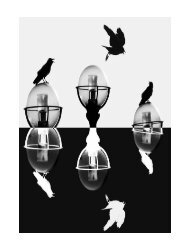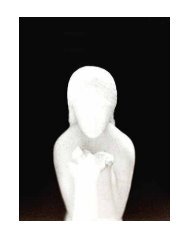Odds and Ends Essays, Blogs, Internet Discussions, Interviews and Miscellany
Collected essays, blogs, internet discussions, interviews and miscellany, from 2005 - 2020
Collected essays, blogs, internet discussions, interviews and miscellany, from 2005 - 2020
Create successful ePaper yourself
Turn your PDF publications into a flip-book with our unique Google optimized e-Paper software.
Prynne’s poetry is also pessimistic, but more in terms of subject matter and outlook. Recent poems like ‘Refuse
Collection’ and To Pollen, for instance, deal directly with the ongoing war in Iraq and work hard-usually through
shifty, shifting pronouns-to implicate reader and speaker alike in the cycle of state-sanctioned murder and torture:
All are disfigured. I saw a hole in my chest, feel
ashamed to plead for your own life it is utter crass
from a hole in the face word vomit lost for them, hurt
stain so much disowned. You hear what you say over
to get off and by right in a mutilation outburst, for
any life at all stand-in to be shameful in a news
flash grease trap.
Prynne’s indeterminacy can be seen as a form of protest, an admittance that if language is indeed irredeemably
corrupted and implicated, it can at least be coaxed into displaying, if not exorcising, its scars and inconsistencies.
Despite the darkness Prynne sees encompassing modern culture, this grain of resistance, however remote, is what
makes his work paradoxically uplifting. This is poetry that despite heavy burdens envisions itself as vital, necessary,
maybe even change-inducing; a faith that places Prynne squarely in a Romantic tradition of possible renewal. It may
only be a potential, and it may stand against intimidating odds, but it is ultimately more optimistic than the Oz-like
revelation at the heart of ‘St Kevin and the Blackbird’, even if it is Heaney himself who pulls back the curtain.
I can believe-rereading the interview quotation- that Heaney doesn’t see much in Prynne’s aesthetic, but he
cannot deny it as a necessary thing, as something at least potentially exciting and motivating. I don’t, pace Side, think
this represents a smug faint-praise dismissal on Heaney’s part, largely because he displays little real faith in his own
“alternative”-note that he ‘yearn[s] for’ a holistic “cement mixer” aesthetic rather than confidently owning it.
“Avant-garde” may indeed be an outdated term, especially given its militaristic overtones, but against this type of
thwarted desire, the invigorating spirit represented by Prynne’s work will always crop up again and be relevant.
I realise that by focusing only on poems I have enjoyed and returned to I may be misrepresenting Heaney’s work as a
whole. However, I still feel that the anxieties and concerns I have indicated recur too frequently not to be significant.
Heaney is about as popular and successful as a contemporary poet can get, but his apparent freedom to bask in the
security of public acclaim, academic positions, prominent prizes and healthy sales figures doesn’t seem to console
him. Instead, it may even add to a burdensome sense of being a spokesman. The resentment-not too strong a word I
think-demonstrated by Side in his assessment may well result from an understandable feeling that figures like
Heaney monopolise a too-large chunk of the limited media attention for poetry at the expense of more deserving
talents, making it harder for genuinely innovative writers to get noticed and recognised.
While there is truth in this, it is too simplistic to use as a one-size-fits-all criteria dividing the poetry world readily
into, on one hand, worthy toilers-in-obscurity and, on the other, vapid media whores out for themselves. There is
also truth in Ron Silliman’s repeated observation (see his blog, virtually passim) that the main problem with “official
verse culture” (to use a now-hackneyed designation) is that it presents itself-i.e. its informal affiliation of big name
trade presses, publishing outlets and sympathetic critics-as the sum reality of contemporary poetry at any given
synchronic cross-section, condemning everyone else to (at best) marginal status, if not outright non-existence. Side’s
annoyance at Heaney’s comments-and the lip service they pay-may well stem from this sense of ungrounded
ostracism: he does come across a little like the smug host welcoming Prynne and his “people” in “alternative
poetics” to the banquet before seating them safely at a table at the back. Such a reading, however, fails to
acknowledge the genuine doubt-and therefore pathos-behind Heaney’s big gun name-checks- Auden, Eliot,
Lowell-and his unfulfilled desire for a “cement mixer” poetic.
Prynne, again, offers a contrast. What irks me most about Heaney’s comment-and which, surprisingly, Side doesn’t
discuss-is his assumption that what might be more charitably regarded as a neo-Marxist scepticism about uncritical
involvement in the consumer marketplace actually represents a detached aestheticism, a ‘kind of cult that shuns
general engagement, regarding it as a vulgarity and a decadence’. This is woefully inadequate to the complex stance
taken both by Prynne and by writers obviously indebted to him (John Wilkinson, Drew Milne, Keston Sutherland and
Andrea Brady, just for starters). It is also where Heaney comes closest to sounding like the stereotypically prejudiced
and near-sighted figure Side paints him as. The clichéd image of Prynne’s career Heaney gestures toward-that he
has systematically trained up (read: brainwashed) a coterie of like-minded supporters from his safe position as a
154




